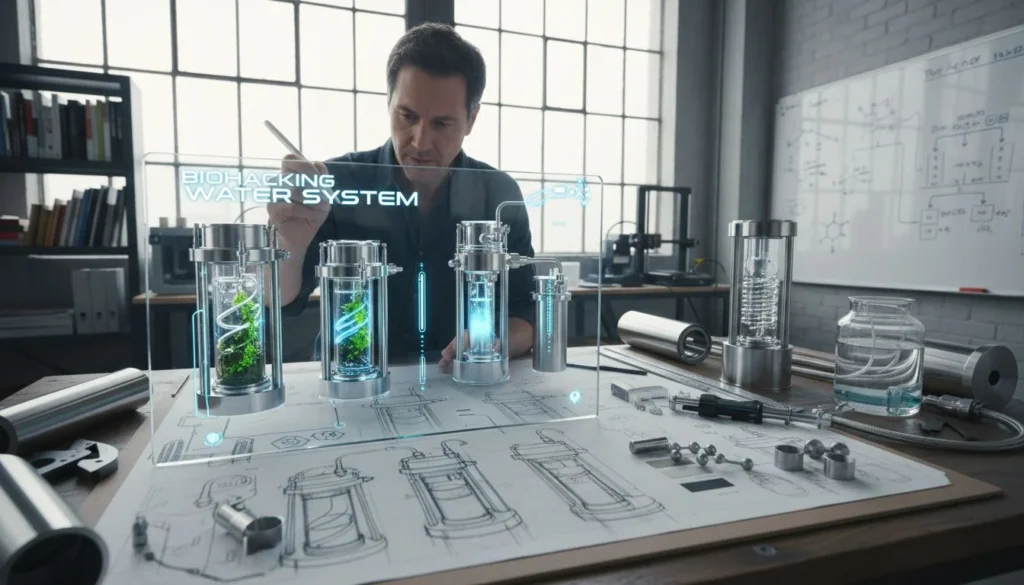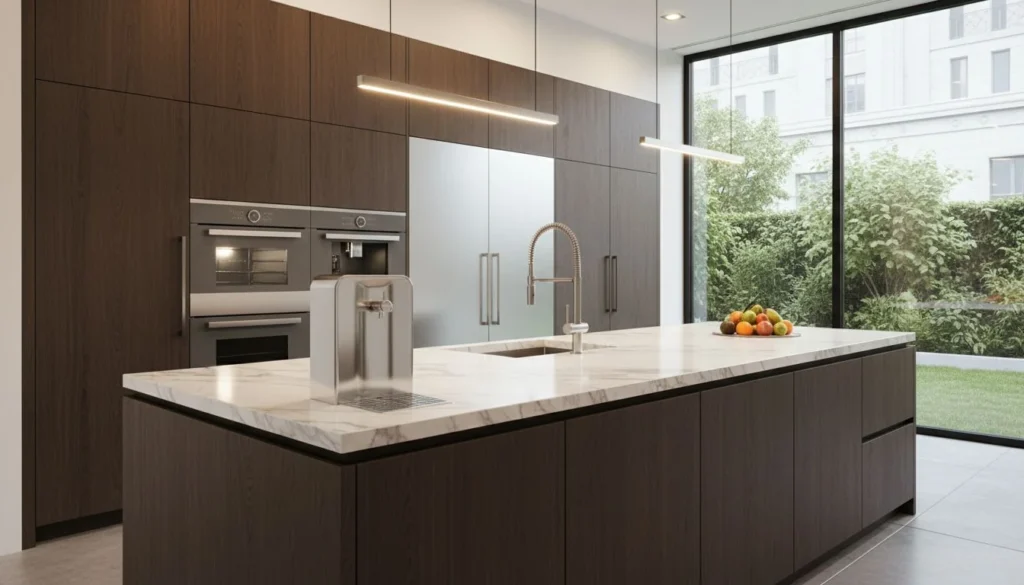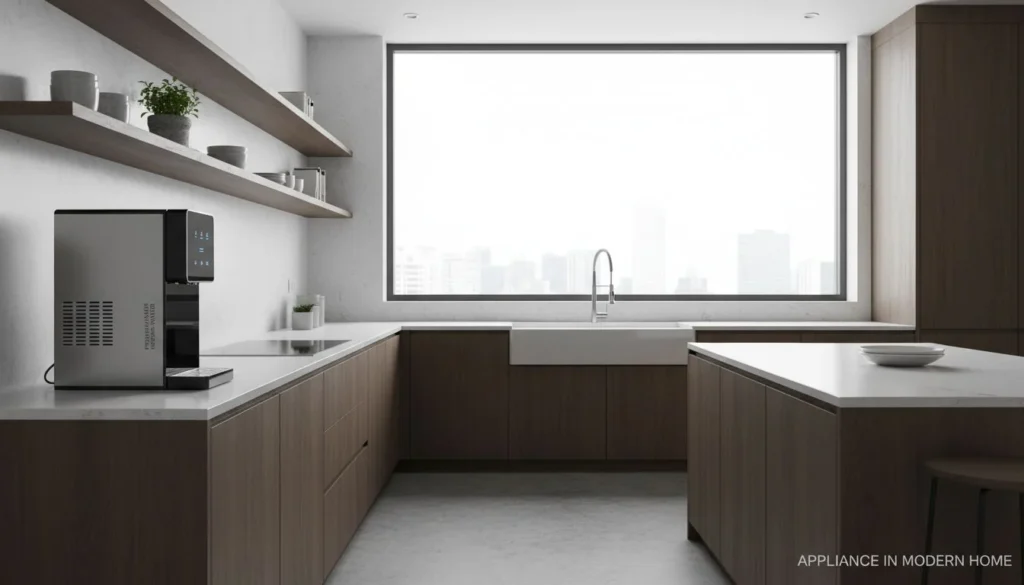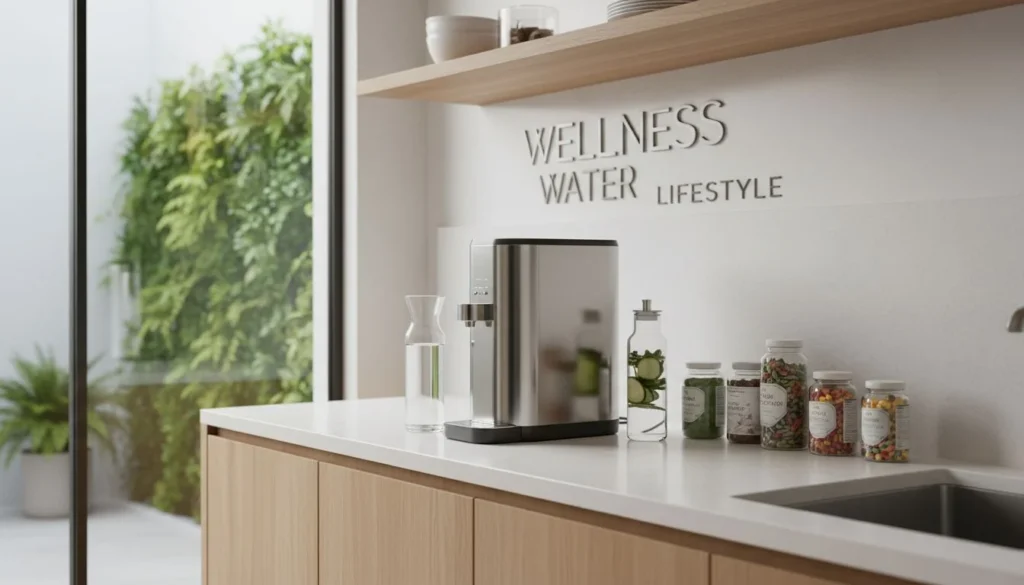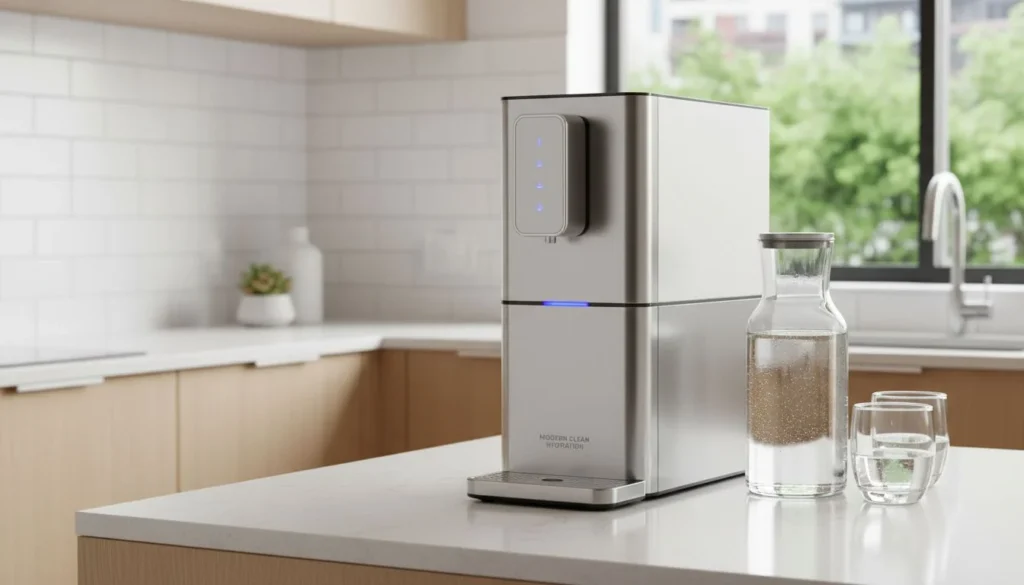
自宅で吸う空気について考えたことがあるだろうか。空気の質と健康に対する意識が高まるにつれ、生活空間を安全で清潔なものにするために家庭用空気清浄機を利用するアメリカ人が増えている。
米国の家庭用空気清浄機市場は、2022年から2032年までの年平均成長率(CAGR)が6.6%で、2032年までに$6.7億ドルに成長すると予想される。
米国の家庭用空気清浄機市場は世界最大で、その市場規模は数十億ドルに達し、健康への関心とニッチ分野での技術革新により大きく成長すると予測されている。
しかし、数字が物語るのはその一部でしかない。この活気ある市場の真の原動力は何なのかを深く掘り下げ、その将来を形作る可能性のあるトレンドを明らかにしよう。
米国は家庭用空気清浄機の世界最大の市場である。真
米国市場は、健康への懸念が原動力となり、その規模と成長性において世界をリードしている。
米国空気清浄機市場の成長を促すものは何か?
米国の空気清浄機市場は、環境問題や健康志向の消費者に後押しされて急成長している。
米国の空気清浄機市場の成長は、健康・環境問題に対する意識の高まりとともに、汚染の増加、技術の進歩、ニッチ市場の革新が牽引している。

環境と健康への懸念
近年では、以下のような要因が挙げられる。 山火事1 と汚染レベルの上昇により、よりクリーンな室内空気の必要性が高まっており、空気清浄機が不可欠となっている。COVID-19の流行はこの意識を高め、多くの人が健康を守るために家庭環境の改善を求めている。一般市民の健康志向の高まりとともに、この傾向は今後も続くと予想される。
歴史的な技術の進歩
米国は空気浄化技術において豊かな歴史を誇っている。 ヘパ は当初、軍によって開発されたフィルターであった。このような歴史が、継続的な技術革新と消費者からの信頼を支える強固な基盤となっている。市場では、特定の環境問題に対処するために設計された最先端技術が定期的に発表されている。
政府の政策と支援
空気の質の向上を目指した政府の支援政策も重要な役割を果たしている。規制や補助金は、メーカーと消費者の双方に空気清浄機の導入を促す。例えば、エネルギー効率の高い電化製品に対する政府の優遇措置には、高度な空気清浄機が含まれていることが多い。
ニッチ市場の革新
ペット用、赤ちゃん用、自動車用空気清浄機などのニッチ市場が急速に拡大している。こうした特化した製品は、消費者のユニークなニーズを満たし、市場全体の成長を牽引している。このような分野で成功を収めている起業家たちは、未開拓のセグメントを開拓することで、大きな成長の可能性を手に入れたと考えることが多い。
戦略的パートナーシップ
ヒソエアのような老舗メーカーとの提携は、革新的な製品を世に送り出すために不可欠なリソースを提供することができる。このような提携により、起業家は既存の専門知識やインフラを活用することができ、市場投入までの時間を大幅に短縮し、製品の品質を高めることができる。
米国の空気清浄機市場は山火事が成長の原動力。真
山火事が公害を増加させ、空気清浄機の需要を押し上げる。
政府の政策が米国の空気清浄機市場の成長を妨げる。偽
支援政策と補助金が市場の成長を促す。
ニッチ市場が空気清浄機セクターのビジネスチャンスを高める?
空気清浄機業界のニッチ市場は、未開拓の可能性を解き放ち、技術革新と専門化を促進している。
ニッチ市場は、特定の消費者ニーズに対応し、イノベーションを促進し、企業が製品を効果的に差別化できるようにすることで、ビジネスチャンスを拡大する。

空気清浄機業界のニッチ市場を理解する
広大な空気清浄機の世界、 ニッチ市場2 が強力な成長の道筋として浮上してきた。これらの市場は、フケやアレルゲンを気にするペットの飼い主をターゲットにしたペット用空気清浄機など、特殊なセグメントに焦点を当てている。同様に、ベビー用空気清浄機は、有害な汚染物質から乳幼児を守ろうとする親を対象としている。
ニッチ市場成長の主な要因
空気清浄機分野におけるニッチ市場の台頭には、いくつかの要因がある:
- 健康上の懸念:空気の質に対する意識が高まるにつれ、消費者は特定の健康問題に対応する製品を購入する傾向が強くなっている。
- 技術の進歩:イノベーション ヘパ フィルターやスマートテクノロジーの統合により、メーカーは多様なニーズに合わせたソリューションを生み出すことができる。
- 規制サポート:空気の清浄化を奨励する政府の政策が、特殊製品の需要を後押ししている。
イノベーションとカスタマイズの役割
ニッチ市場は、カスタマイズとイノベーションで成長する。例えば、自動車用空気清浄機は、外出先でもきれいな空気を確保したいと願う通勤者の間で人気を博している。これらの機器は、イオナイザーやポータブル・デザインなどの機能を備えていることが多く、技術の進歩がいかに特定のライフスタイルのニーズに対応しているかを示している。
| ニッチ市場 | 対象消費者 | ユニークな特徴 |
|---|---|---|
| ペット用空気清浄機 | ペットオーナー | ペットのフケやアレルゲンをろ過 |
| ベビー用空気清浄機 | 両親 | 静かな動作、安全な素材 |
| 車用空気清浄機 | 通勤者 | コンパクトなポータブル設計 |
成功への触媒としての戦略的パートナーシップ
こうしたニッチ分野に参入する起業家にとって、ヒソエアのようなメーカーとの戦略的パートナーシップは極めて重要である。コラボレーションによって、市場の需要に沿った革新的な製品の開発が促進され、急速に進化するこの業界において競争力を確保することができる。さらに、パートナーシップは最先端の技術や知見へのアクセスを提供し、ビジネスの効率的な拡大を可能にする。
こうした力学を理解することは、空気清浄機分野で拡大するビジネスチャンスを活かそうとする者にとって不可欠である。特定の消費者の関心事への対応であれ、戦略的提携の活用であれ、ニッチ市場は持続的成長と収益性への道を提供する。
空気清浄機のニッチ市場は、特定の消費者ニーズをターゲットとしている。真
ニッチ市場は、ペット用空気清浄機やベビー用空気清浄機のような専門分野に焦点を当てている。
すべての空気清浄機は一般家庭用に設計されています。偽
空気清浄機の中には、車やペットなど特定のニーズに合わせたものもある。
空気清浄機の進化においてテクノロジーが果たす役割とは?
テクノロジーは空気清浄機に革命を起こし、より効率的でユーザーフレンドリーなものとなっている。
技術の進歩は、ろ過効率の向上、スマート機能の統合、携帯型や車載型などの応用分野の拡大により、空気清浄機を変貌させた。
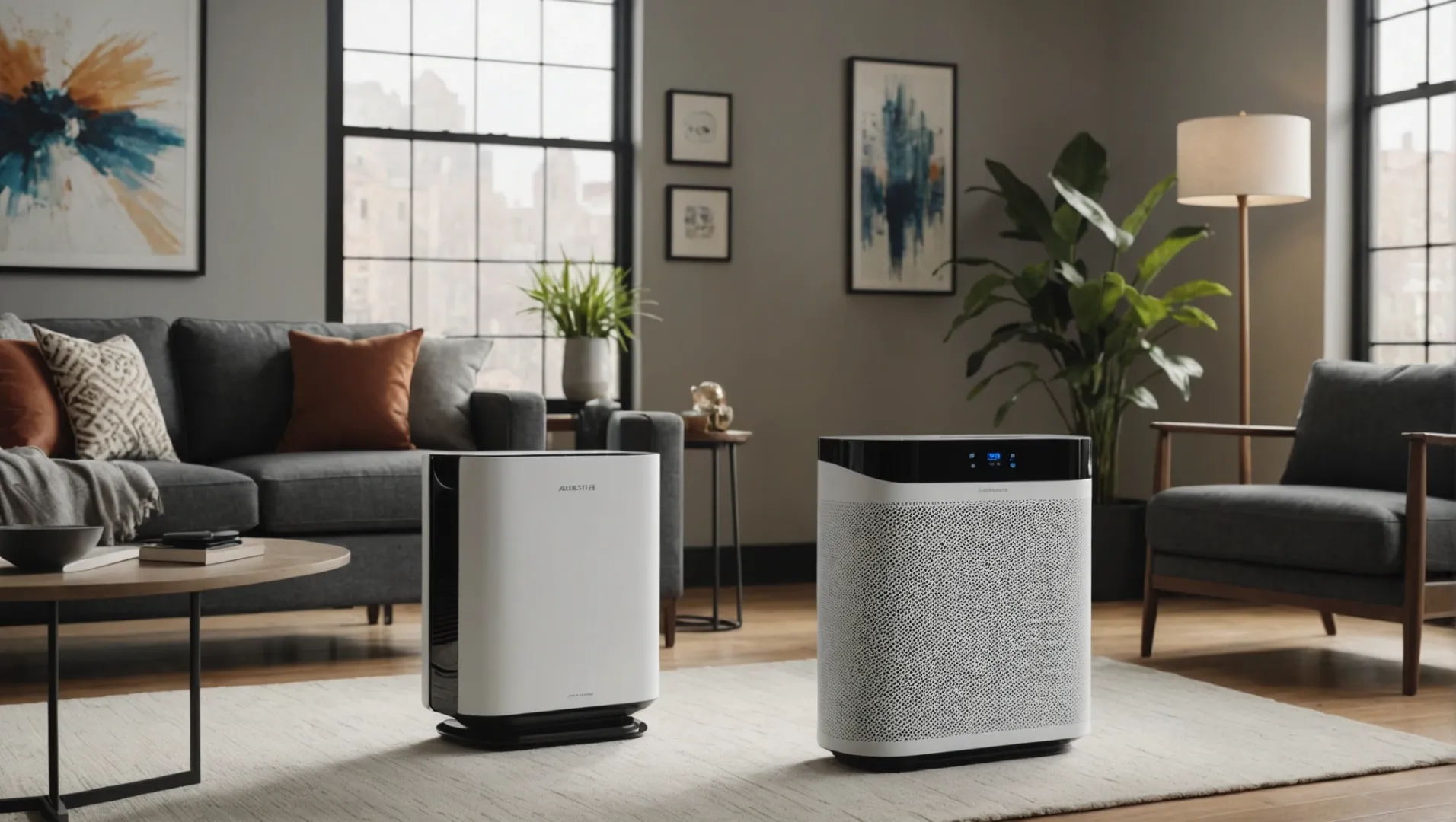
より ヘパ 高度多段ろ過へのフィルター
空気清浄機が脚光を浴びるきっかけとなったのは、次のようなものだった。 ヘパ (高効率粒子状空気)フィルターは、米軍が開発した技術である。 ヘパ フィルターは、0.3ミクロンという微小粒子を効果的に捕捉する基礎であることに変わりはない。しかし、技術の進化により、以下のような多段ろ過システムが導入された。 ヘパ 活性炭、UV-Cライト、イオン化によって、ウイルス、VOC(揮発性有機化合物)、臭気など、より幅広い汚染物質に対応する。
スマートな機能と接続性
の統合 IoT (モノのインターネット)により、ホームネットワークに接続できるスマート空気清浄機が開発された。これらの機器は、スマートフォンのアプリで遠隔操作が可能で、ユーザーはリアルタイムで空気の質を監視し、どこからでも設定を調整できる。さらに、スマートセンサーは、検出された汚染物質レベルに基づいて浄化レベルを自動的に調整し、エネルギー使用を最適化し、最適な空気品質を確保することができる。
ポータブルおよび特殊清浄機
技術の進歩により、持ち運び可能な専用空気清浄機が登場した。車内や旅行先で使用できるコンパクトなモデルも登場し、外出先での空気環境の懸念に対応している。さらに、ペット用やベビー用のようなニッチ製品は、特定のニーズに応えており、技術がいかに市場の差別化を促進しているかを示している。
将来の展望 AI 機械学習
前を見ている、 AI (人工知能)と機械学習は、空気浄化技術をさらに変革する用意がある。これらのシステムは、汚染傾向を予測し、パーソナライズされた浄化ソリューションを提供し、機器の効率を高めることができる。これらの技術が成熟するにつれて、空気清浄機が私たちの日常生活にさらに欠かせないものになることが期待される。
空気清浄機業界におけるテクノロジーの役割は否定できない。技術革新が進むにつれ、製品の機能性が向上するだけでなく、この成長分野に資本を投下しようとする起業家にとって、新たな市場機会も生まれている。このような進歩をさらに探求することに興味のある方は、以下をご覧ください。 AI 空気浄化への応用3 または理解する 多段ろ過の利点4 より深い洞察が得られるかもしれない。
HEPAフィルターは0.3ミクロンの粒子を捕集します。真
HEPAフィルターは、0.3ミクロンまでの粒子を捕獲するように設計されています。
AIは空気清浄機の汚染傾向を予測することはできない。偽
AIは汚染傾向を予測し、浄化装置を最適化するために開発されている。
なぜ戦略的パートナーシップがこの業界での成功の鍵なのか?
空気清浄機のような競争の激しい業界では、戦略的パートナーシップは技術革新と市場への参入に不可欠である。
空気清浄機業界における戦略的パートナーシップにより、企業は相互補完的な強みを活用し、新たな市場にアクセスし、イノベーションを促進することができる。

補完的な強みの活用
空気清浄機業界では、1つの企業内では利用できない専門知識やリソースを組み合わせるコラボレーションがしばしば行われる。例えば ヘパ フィルター設計は、次のような定評のあるメーカーと提携するかもしれない。 ヒソエア5 により、高品質の生産を確保することができる。このような提携により、企業は互いの強みを生かすことができるようになり、その結果、製品提供が改善され、市場競争力が強化される。
マーケット・リーチの拡大
戦略的パートナーシップは、新たな地理的市場への参入を促進することもできる。例えば、米国を拠点とする空気清浄機メーカーは、国際的な販売代理店と提携することで、特に公害や空気の質の悪さに悩まされる地域で、海外での需要拡大を取り込むことができる。現地の企業と協力することで、企業は消費者の嗜好や規制環境に関する貴重な洞察を得ることができ、これは事業拡大を成功させる上で極めて重要である。
イノベーションとニッチ開発の推進
ペット用空気清浄機や携帯型など、ニッチな分野が急速に台頭している空気清浄機市場では、イノベーションが鍵となる。テクノロジー企業や学術機関と提携することで、企業は新しい製品機能を開拓し、既存技術を改善することができる。研究開発(R&D)に重点を置いたパートナーシップは、特定の消費者ニーズを満たす最先端のソリューションを生み出し、企業を競合他社から引き離すことができる。
規制上の課題を克服する
空気清浄機業界は、消費者の安全性と製品の有効性を確保するために厳しい規制を受けている。法律の専門家や規制の動向に詳しい組織と提携することで、企業は複雑なコンプライアンス要件を効率的に乗り越えることができる。これはリスクを軽減するだけでなく、新製品の市場投入までの時間を短縮することにもつながる。
ケーススタディヒソエアの協力モデル
ヒソエアのケースを考えてみよう。ヒソエアは、戦略的パートナーシップを結んで、商品ラインアップと市場での存在感を高めることに成功している。サプライヤーから小売業者まで、さまざまなステークホルダーと協力することで、ヒソエアは、消費者のさまざまなニーズに応える多様なポートフォリオを作り上げることに成功した。このようなモデルは、業界の持続可能な成長と革新の達成における戦略的提携の重要性を強調している。
戦略的パートナーシップは空気清浄機の市場リーチを拡大する。真
パートナーシップは、企業が新しい地理的市場に参入し、事業を拡大するのに役立つ。
ヒソエアは経営権を維持するために戦略的提携を避けている。偽
ヒソエアは、製品ラインと市場での存在感を高めるためにパートナーシップを結んでいる。
結論
米国の家庭用空気清浄機市場は、健康への関心と技術革新により、継続的な成長が見込まれている。ニッチな機会と戦略的パートナーシップに注力することが成功の鍵である。
-
山火事がいかに全国の大気の質を悪化させているか..:山火事は大量の二酸化炭素、黒色炭素、褐色炭素、オゾン前駆物質を大気中に放出する。これらの排出物は放射線や雲に影響を与える。 ↩
-
空気清浄機の技術革新を促進する専門セグメントについて学ぶ: ↩
-
AIが空気清浄機の性能をどのように最適化するかをご覧ください:空気清浄機には、ほこり、VOC、温度、湿度を検知する4つの高度なセンサーが内蔵される。さらに、AIシステムはインターネットに接続することができる。 ↩
-
強化された濾過効率と汚染物質除去について学ぶ:空気中に浮遊する病原体を減らすことに重点が置かれる中、室内空気質の改善は、最高の空気浄化技術を組み合わせることで初めて可能になります。 ↩
-
Hisoairとのパートナーシップにより、製造能力がどのように強化されるかをご覧ください:ヒソエアは、優れた空気品質を通じてウェルビーイングの向上に取り組んでおり、当社の献身的なサポートと卓越したエンジニアリングにより、すべてのお客様にメリットをお届けしています。 ↩


